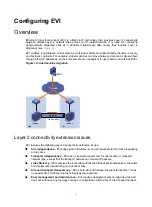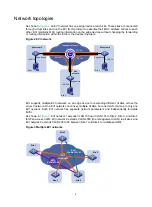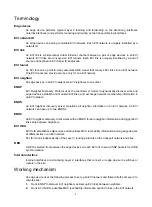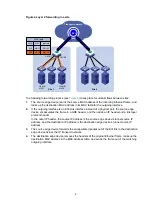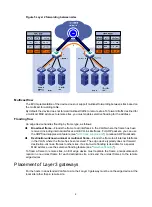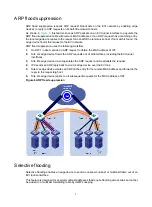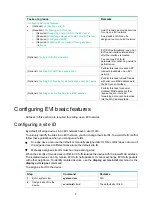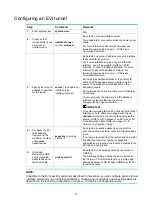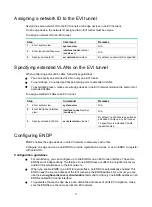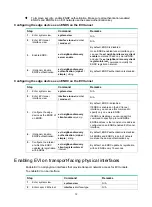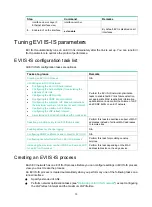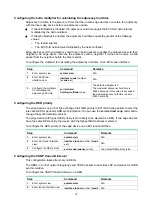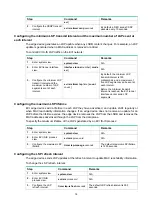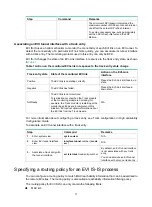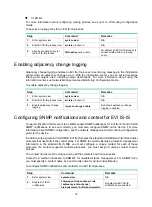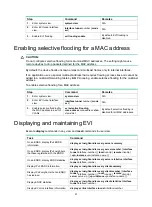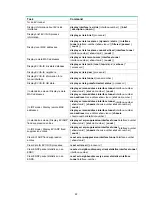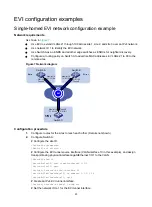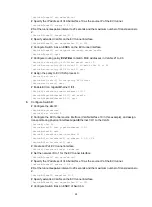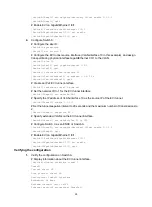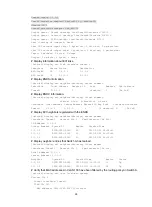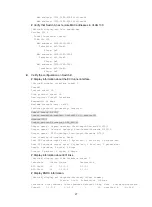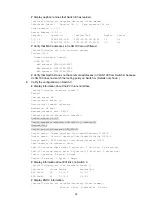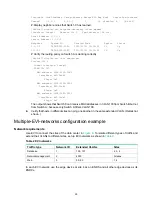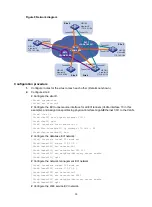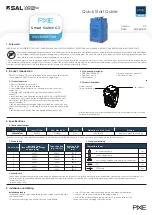
15
Configuring the hello multiplier for calculating the adjacency hold time
Adjacency hold time is the amount of time that the remote edge devices can retain the adjacency
with the local edge device before an adjacency update.
•
If Graceful Restart is disabled, the adjacency hold time equals the EVI IS-IS hello interval
multiplied by the hello multiplier.
•
If Graceful Restart is enabled, the adjacency hold time equals the greater of the following
values:
{
The restart interval.
{
The EVI IS-IS hello interval multiplied by the hello multiplier.
Edge devices send their adjacency hold time in hello packets to update the adjacencies with their
neighbors. An edge device removes the adjacency with a neighbor if it does not receive a hello
packet from the neighbor before the timer expires.
To configure the multiplier for calculating the adjacency hold time on an EVI tunnel interface:
Step Command
Remarks
1.
Enter system view.
system-view
N/A
2.
Enter EVI tunnel
interface view.
interface tunnel number
[
mode evi
]
N/A
3.
Configure the multiplier
for calculating the
adjacency hold time.
evi isis timer
holding-multiplier value
The default multiplier is 3.
The maximum adjacency hold time is
65535 seconds. If this value is exceeded,
the actual adjacency hold time is set to
65535 seconds.
Configuring the DED priority
The edge devices on an EVI link exchange their DED priority in EVI IS-IS hello packets to elect the
inter-site DED for periodic LSDB synchronization. You can use the
evi isis timer csnp
command to
change the synchronization interval.
The edge device with higher DED priority is more likely to be elected as a DED. If two edge devices
have the same DED priority, the device with the highest MAC address is elected.
To configure the DED priority of the edge device on an EVI tunnel interface:
Step Command
Remarks
1.
Enter system view.
system-view
N/A
2.
Enter EVI tunnel interface
view.
interface tunnel number
[
mode
evi
]
N/A
3.
Configure the DED priority.
evi isis ded-priority priority
The default DED priority is 64.
Configuring the CSNP transmit interval
This configuration takes effect only on DEDs.
The DEDs in an EVI network regularly send CSNP packets to advertise LSP summaries for LSDB
synchronization.
To configure the CSNP transmit interval on a DED:
Step Command
Remarks
1.
Enter system view.
system-view
N/A
2.
Enter tunnel interface view.
interface tunnel number
[
mode
N/A

